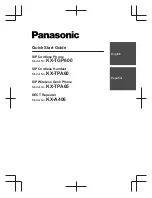
12
History
In 1988, the newly established European Telecommunications Standards
Institute (ETSI) was faced with the task of defining a European standard
for digital cordless telephones. A British standard (CT2) and a Swedish
standard (CT3) already existed, but ETSI decided to create a completely
new standard that went much further. This was the hour that DECT was
born
In June 1991, the most important parts of the standard entered the public
comment phase and the first DECT units were commercially available as
early as 1992.
DECT received further momentum in 1994 through the definition of the
Generic Access Profile (GAP) which made it possible to combine units
from different manufacturers with each other. Today, all DECT units are
mostly GAP-compatible.
Work on DECT still continues. New extensions are continuously being
defined at ETSI.
DECT describes a mobile communications system, the fixed part of which
consists of one or several base stations. The counterpart to this is the
handset. It is possible to use several handsets, such as several cordless
telephones within one home or office.
It is also possible to use several base stations in a fixed mobile
communications system to supply a larger area (building complex), or to
enable several calls simultaneously. The base stations are then controlled
by an internal control module (Fixed Part Controller).
Содержание LIFE S63003
Страница 10: ...12 Esquema del aparato Terminales m viles...
Страница 86: ......
Страница 98: ...14 Overview of the appliance Mobile parts...
Страница 176: ...92...
Страница 188: ...14 Ger te bersicht Mobilteile...
Страница 266: ...92 8 T U V 8 t u v 8 9 W X Y Z 9 w x y z 9 0 0 0 Umschaltung nur Kleinbuchstaben nur Gro buchstaben Gro Kleinschreibung...
















































